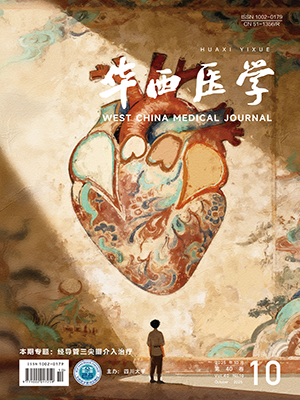【摘要】 目的 探讨放射性核素骨显像和血清前列腺特异抗原(PSA),碱性磷酸酶(ALP),骨特异性碱性磷酸酶(BAP)测定在前列腺癌骨转移诊断中的价值。 方法 回顾性分析2006年10月-2009年10月50例前列腺癌(PCa)患者骨显像结果及PSA、ALP、BAP测定结果。 结果 50例Pca患者骨显像阳性率为70.0%。35例Pca骨转移患者分布在PSA gt;20.0 ng/mL时占97.1%,BAP gt;20.1 μg/L时占88.6%,ALP gt;130.0 μg/L时占94.3%。血清PSA、ALP、BAP水平随着放射性核素骨显像分级的增高而逐步增高,呈高度正相关。 结论 放射性核素骨显像仍然是目前诊断PCa骨转移的主要方法;PSA、ALP、BAP亦是重要的辅助诊断指标;PSA gt;20.0 ng/mL时,患者应常规行全身骨显像检查。
【Abstract】 Objective To explore the clinical value of radionuclide bone scintigraphy and measurements of serum prostate-specific antigen (PSA), alkaline phosphatase (ALP) and bone-specific alkaline phosphatase (BAP) in the diagnosis of bone metastasis in prostate cancer (PCa) patients from October 2006 to October 2009. Methods The results of bone scintigraphy, serum PSA, ALP and BAP were analyzed retrospectively in 50 PCa patients. Results The positive rate of bone scintigraphy was 70.0% in 50 PCa patients. In 35 patients with PCa bone metastasis, 97.1% of them were PSA gt;20.0 ng/mL, 88.6% were BAP gt;20.1 μg/L, and 94.3% were ALP gt;130.0 μg/L. The serum levels of PSA, ALP and BAP were increased step by step along with the advancement of bone metastatic grading from M0 to M3. They were significantly positively correlated. Conclusion Radionuclide bone scintigraphy is a major method in the diagnosis of bone metastasis in PCa patients currently. PSA, ALP and BAP are also important auxiliary diagnostic markers. Patients with the level of PSA gt;20.0 ng/mL should take a routine whole-body examination of bone scintigraphy.
Citation: XU Ying,XU Xiaohui,TIAN Hua,He Tao. Application Value of Radionuclide Bone Scintigraphy and Measurements of Serum Prostate-Specific Antigen, Alkaline Phosphatase and Bone-Specific Alkaline Phosphatase in Diagnosis of Bone Metastasis in Prostate Cancer Patients. West China Medical Journal, 2010, 25(7): 1294-1296. doi: Copy
Copyright © the editorial department of West China Medical Journal of West China Medical Publisher. All rights reserved




